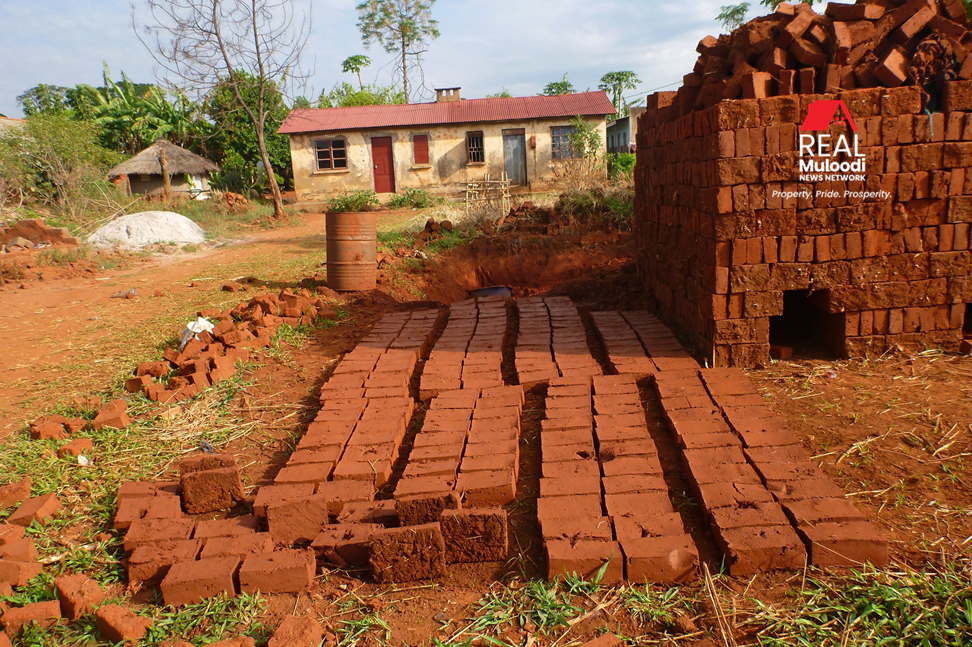UGANDA, Mbarara | Real Muloodi News | Unable to secure employment, a group of young people in Mbarara City have turned to bricklaying as a means of subsistence.
Mr Habibu Mugisha, 28, a native of Maziba in the Kabale District, started in the profession after finishing primary seven.
“When I completed my primary seven, I did not have money to continue with studies, so I decided to come and start bricklaying in Mbarara,” he says.
According to Mr Mugisha, brick making entails four steps: clay preparation, moulding, drying, and brick burning.
“There is no easy job because you must be prepared for all those stages, but it is a lifesaving venture. I have managed to look after my family and paid rent regardless of the challenges that come with the business,” he says.
After failing to find employment, Mr Cosma Nahwera from Kikagati, Isingiro District, who had finished a bricklaying and concrete practise course two years before, launched a similar business in Rubiri cell in Mbarara City South division.
“I lost hope in getting employed, so I started bricklaying to raise enough capital to start my own businesses”, says Mr Nahwera. “I, however, ask the government to give us grants either as groups or individuals,” he adds.
Mr Deus Beronda, from Rugando, Rwampara, also joined the profession after finishing his Senior Four and witnessing his colleagues make a decent living from bricklaying.
“I witnessed my friends earn much from this business, and I felt I should join them. We want our leaders to help us acquire loans and capital to boost our business,” he says.
Mr Abdulakim Mwasi, 35, the chairperson of the Rubiri Bricklayers Association and a resident of Mbarara City’s Rubiri cell, has been in the business for over 12 years.
“I have managed to look after my family and also bought properties, including plots of land,” says Mwasi.
“This business requires little money for a start-up, and does not ask for academic documents,” Mwasi adds.
“One spends USh130 per brick from the first stage to the last stage of production, but we sell it at USh250, which is profitable,” Mr Mwasi says.
Some say that while making bricks is beneficial in terms of employing youth, the benefits are outweighed by the adverse effects it has on the environment, since it involves cutting trees for firewood and often encroaches on wetlands and swamps. However, Mr Mwasi says otherwise.
“While doing our activities, we try much to protect our environment by not encroaching on swamps, and we help in levelling the ground,” Mr Mwasi says.
Mr Assy Abireeba, the municipal clerk, says that licences to carry out the profession will soon be issued.
“We haven’t started licensing those who operate in the brick business. We only tax transporters of their products, but we plan to start directly licensing those who lay bricks,” he says.
Mr Jeconious Musingwire, the National Environment Management Authority (NEMA) focal person for the western area, claims that they had been educating brickmakers on the advantages of environmental conservation.
“We usually teach them to cover ditches once they are done with their business, the challenge is that those who directly do bricklaying have landlords and it becomes hard for them to ensure the conservation of the environment since they only aim at making money,” he says.
“Landlords are the ones who are responsible for the conservation of the environment, especially bricklaying sites. It’s their responsibility to ensure those who carry out bricklaying follow the set guidelines,” Mr Musingwire adds.
READ MORE LIKE THIS:
Which is Better for Construction, Burnt Bricks or Concrete Blocks?
Watch Video: Recycling Plastic Waste into Bricks 5x Stronger Than Concrete
VIDEO: Earthbag Construction Technology; 30% Cheaper than Blocks or Bricks



